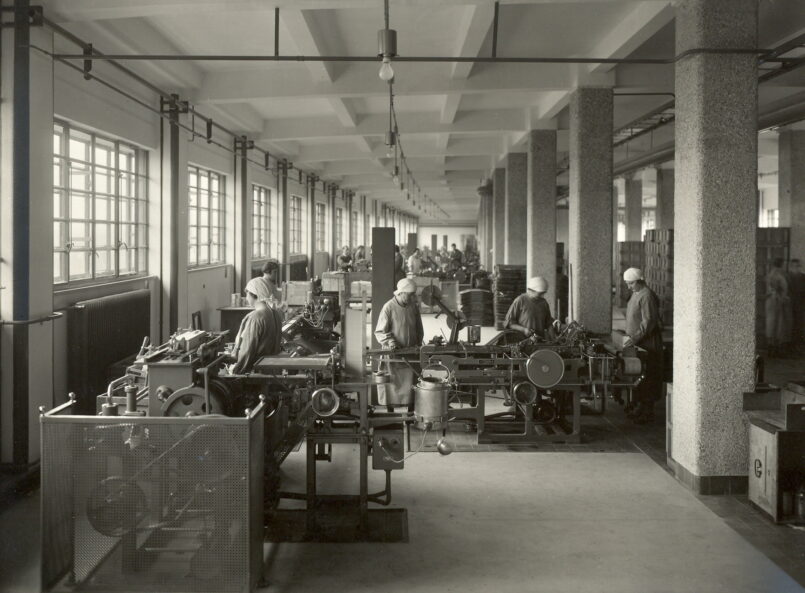Tabakfabrik (the Linz tobacco factory) is a heritage-listed industrial complex designed by Peter Behrens and Alexander Popp erected in 1929-1935. As Austria’s very first steel frame building constructed in the New Objectivity style, Tabakfabrik is also of international architectural significance. The entire tobacco factory complex is a work of art – a radical functionalist masterpiece.
For more than 350 years, goods were manufactured at this location – textiles from 1668 to 1850 and subsequently tobacco.Founded in 1850 as an emergency measure after the abrupt end of the textile factory, the tobacco factory became a symbol of recovery through change. In 2001, the British Gallaher-group bought the enterprise during a period of privatization; this group itself was sold to „Japan Tobacco International“ in 2007. The Japanese owners shut down operations in 2009. The City of Linz subsequently repurchased the factory complex.
This architectural gem is now used for a variety of contemporary art and business purposes – a social microcosm of the working, business and living environments of the future. Its development is being designed by Tabakfabrik Linz Entwicklungs- und Betriebsgesellschaft mbH, which is part of the City of Linz’s corporate group.
The Tabakfabrik Linz is not only important for Linz’s international positioning, but also because of its importance for the creative industry. It is home to around 250 organizations of various sizes that offer around 2,900 jobs. These organizations and people from different industries – artists, start-ups, social organizations and programs, advertising and media agencies, business angels, founders, investors, students, social workers, technology and software developers, architects, designers, manufacturers and many more – use the Tabakfabrik as an office, studio, co-working space, lecture hall, workshop, meeting room and event location. The focus is on connecting this ecosystem, creating a vibrant community, collaborating across borders to ultimately benefit from each other. Because where different people come together, the best ideas arise.

© ATW